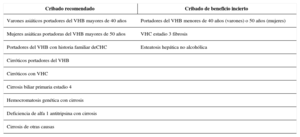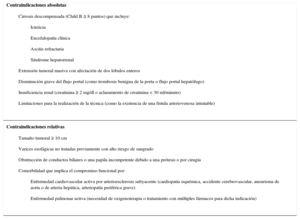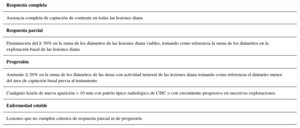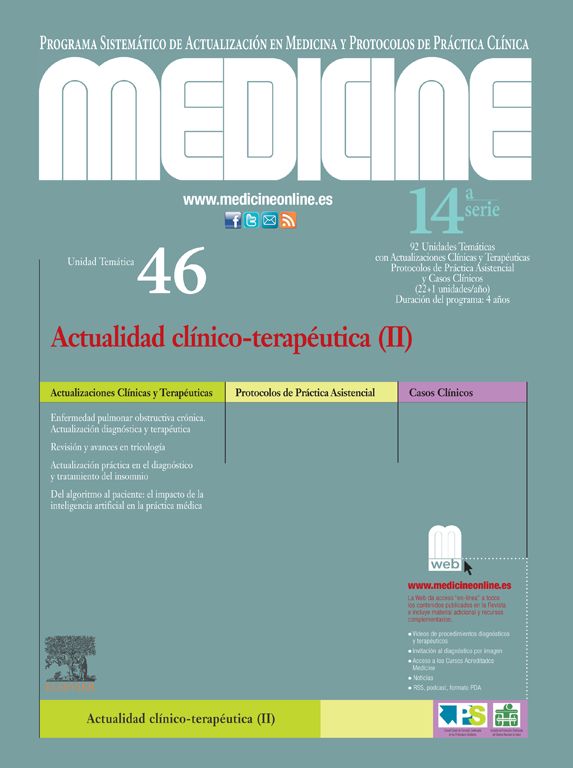El carcinoma hepatocelular es el tumor hepático primario maligno más frecuente que generalmente asienta sobre hígado cirrótico. Existen diferentes poblaciones de riesgo que determinan la necesidad de realizar estrategias de cribado para el diagnóstico precoz. En pacientes cirróticos se recomienda la realización de ecografía cada seis meses. El diagnóstico de hepatocarcinoma se efectúa mediante pruebas de imagen dinámicas. La detección en la tomografía computadorizada cuatrifásica o angiorresonancia magnética de un nódulo hipervascular en fase arterial y con lavado precoz en fase venosa es diagnóstica de hepatocarcinoma. El sistema de estadificación BCLC permite la clasificación de los pacientes en función de las características tumorales y de la enfermedad hepática, y facilita la asignación de las actitudes terapéuticas. La cirugía, la ablación percutánea y el trasplante hepático son alternativas con intención curativa aplicables en pacientes en estadios precoces. Sorafenib es un inhibidor multiquinasa que mejora la supervivencia en pacientes con tumores avanzados
Palabras Clave
Hepatocellular carcinoma is the most frequent malignant primary liver tumor that is generally found on the cirrhotic liver. There are different risk populations that determine the need to carry out screening strategies for early diagnosis. In cirrhotic patients, it is recommended to perform an ultrasound graph every six months. Diagnoses of the hepatocarcinoma is made using dynamic imaging tests. Detection on the four-dimension phase computed tomography or magnetic angioresonance of a hypervascular node in arterial phase and with early washout in the phase is diagnostic of hepatocarcinoma is performed. The BCLC staging system allows classification of the patients based on the tumor characteristics and those of the hepatic disease, and facilitates assigning therapeutic attitudes. Surgery, percutaneous ablation and liver transplant are alternatives with applicable curative intention in patients in early stages. Sorafenib is a multikinase inhibitor that improves survival in patients with advanced tumors.
Keywords
Identifíquese
¿Aún no es suscriptor de la revista?
Comprar el acceso al artículo
Comprando el artículo el pdf del mismo podrá ser descargado
Teléfono para incidencias
De lunes a viernes de 9h a 18h (GMT+1) excepto los meses de julio y agosto que será de 9 a 15h






